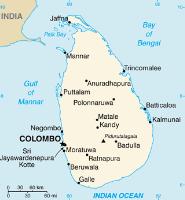First of a three-part series. COLOMBO, Sri Lanka -- In the silent, low-res imagery of the closed-circuit video footage that rapidly spread across YouTube, the young Tamil woman appears unafraid, even poised. Wrapped in a crisp sari, hair in a tight bun, she waits across the desk from the political secretary of a Sri Lankan minister. But something, almost imperceptible in the footage, goes wrong. So as a dozen people go about their business behind her, the woman rises from her chair, tugs at her bra and explodes, her torso vaporized in a C4 blast that kills her and the secretary, instantly raising the Sri Lankan death toll by two. The November 2007 attack video was not posted by the apparent attackers, the Liberation Tigers of Tamil Eelam, but by the Sri Lankan government's Ministry of Defense, whose 25-year war with the insurgents has been marked by many losses on the information front. The launch of a viral video on YouTube, however, demonstrated a more sophisticated effort to control what is called the "information environment," an effort to "publicize insurgent violence and use of terror to discredit the insurgency," a tenet of the U.S. Army-Marine Corps Counterinsurgency Field Manual.
Sri Lanka’s Information War: Part I

